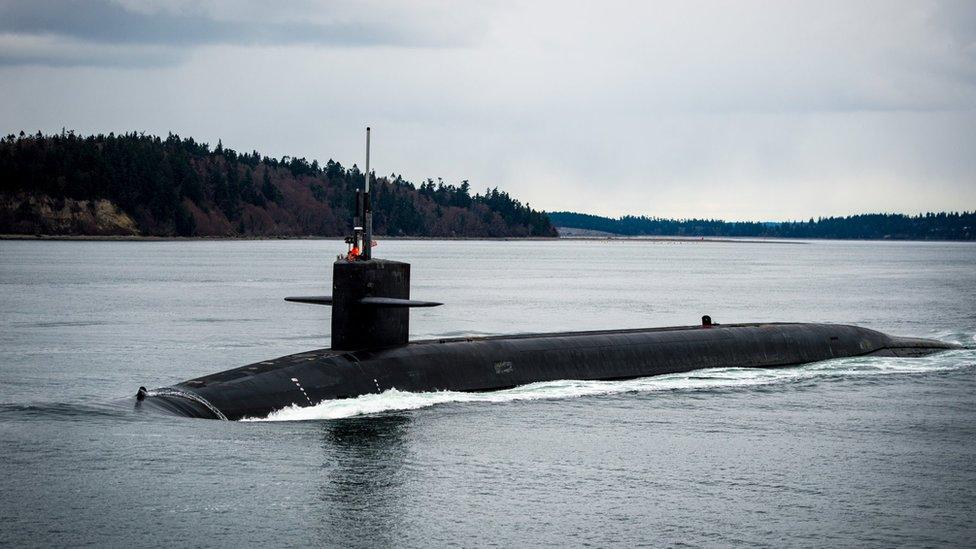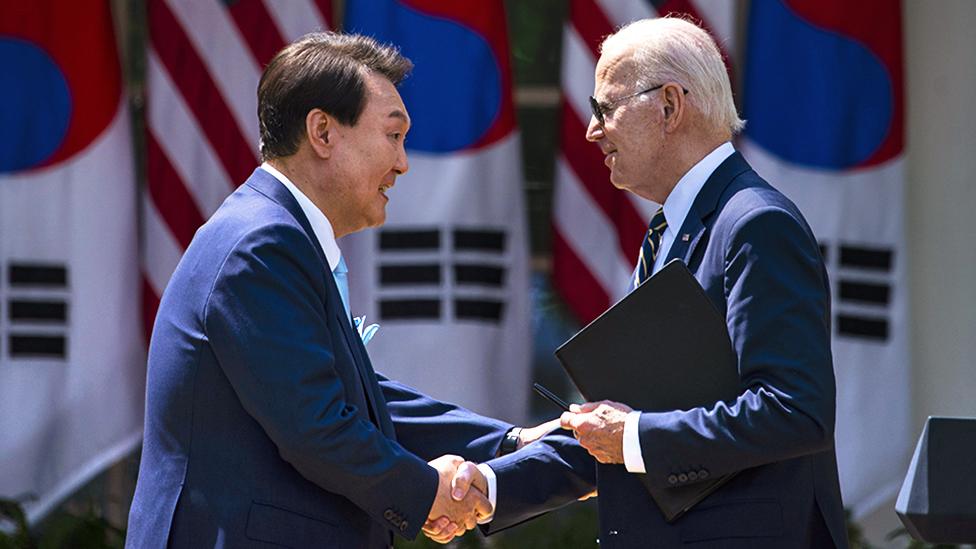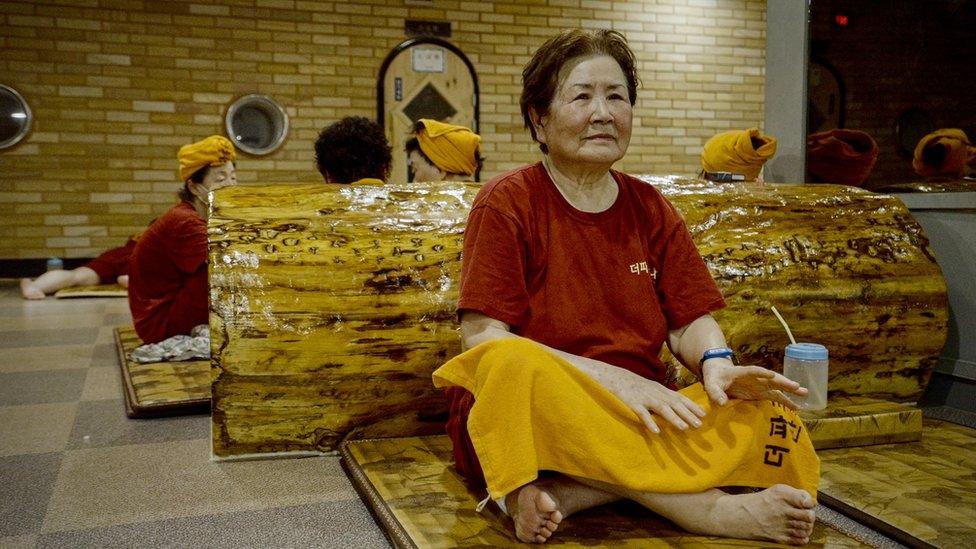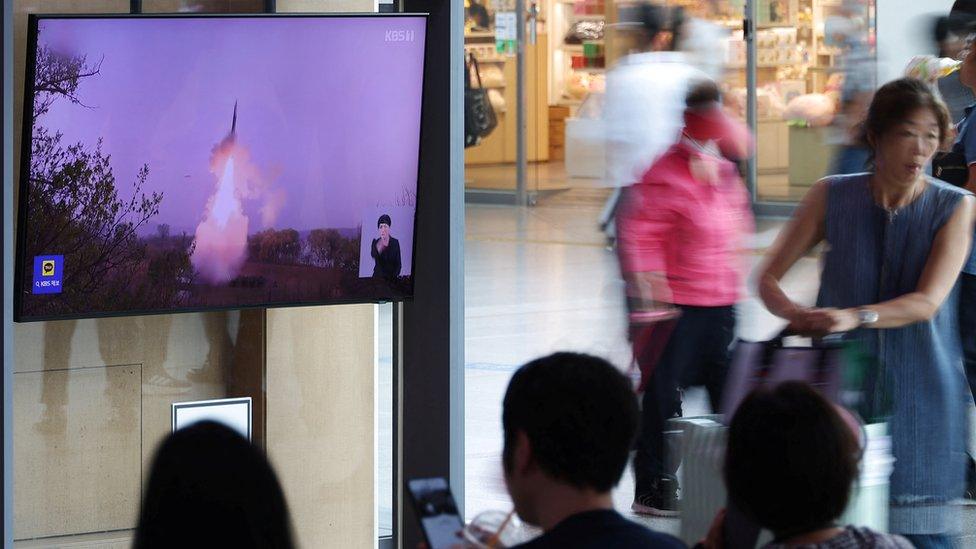First US nuclear sub docks in South Korea since 1981
- Published

The USS Kentucky is one of 14 American submarines capable of carrying ballistic missiles
A US submarine armed with nuclear weapons has docked in South Korea for the first time in four decades, amid escalating tensions with Pyongyang.
The sub, identified by South Koran officials as the USS Kentucky, docked in Busan port on Tuesday.
In April, the US agreed to periodically deploy nuclear-armed subs to South Korea, to counter increasing aggression from North Korea.
But Pyongyang has warned the move could escalate nuclear tensions.
On Monday, Kim Yo Jong, the influential sister of North Korea's leader Kim Jong-Un, said the regime was "ready for resolutely countering any acts of violating its sovereignty".
Speaking after North Korea engaged in fresh missile tests last week, she said the deployment of the USS Kentucky would make [Pyongyang] go farther away" from any possible nuclear talks with the US.
On Wednesday, Pyongyang fired a suspected intercontinental ballistic missile (ICBM), which flew for more than an hour before landing short of Japanese waters.
The launch, which was condemned by Western leaders, was the 15th of the year by North Korea. ICBMs are particularly worrying because of their long range, which could hit mainland United States.
The rapid rate of North Korean tests sparked a renewed debate in Seoul earlier this year, as to whether the country ought to seek to develop its own nuclear stockpile.
In January, President Yoon Suk Yeol became the first South Korean leader in decades to discuss the issue, telling reporters that if Pyongyang's programme "gets worse" then his country "will introduce tactical nuclear weapons or build them on our own".
The announcement alarmed US policymakers, who sought to offer Mr Yoon more concrete defence alternatives.
Under the Washington Declaration - struck in April between US President Joe Biden and Mr Yoon - the US will make its defence commitments more visible by sending nuclear-armed submarines and other strategic assets, including nuclear-capable bombers, to South Korea.
During the 1970s, it was relatively common for US submarines to dock in South Korea. But the visits became less frequent as the cold war came to a close and the threat from North Korea to the south declined, with the last visit taking place in 1981.
The two sides also agreed to develop a Nuclear Consultative Group to discuss nuclear planning issues, which met for the first time on Tuesday.
Speaking in Seoul after the first meeting of the group, White House Indo-Pacific co-ordinator Kurt Campbell told reporters that the USS Kentucky's visit would send a powerful signal to Pyongyang, of America's commitment to South Korea's defence.
Seoul's National Security Adviser, Kim Tae-hyo, said the US had "demonstrated strong resolve that in case the north attacks the south with nuclear weapons, it will be met with immediate, overwhelming and decisive counter-measures, leading to the demise of its regime".
The Kentucky, an Ohio-class submarine commissioned in 1991, carries 20 Trident II D5 missiles, each of which can deliver up to eight nuclear warheads to targets as far as 12,000km (7,500 miles) away.
It is one of 14 US submarines capable of carrying ballistic missiles.
- Published27 April 2023

- Published22 April 2023

- Published12 July 2023
